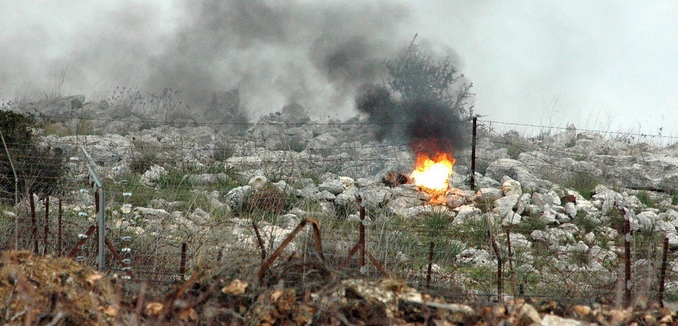Yesterday, the IDF’s official blog presented an analysis by a senior IDF officer concerning the security challenges facing Israel on its northern border with Lebanon. According to the report, Hezbollah is continuing to affirm its presence in the area, and “for the first time in years, Hezbollah flags can be seen near the border.” This is a violation of United Nations Security Council resolution 1701, which prohibits the presence of any armed forces south of the Litani River, with the exception of the United Nations Interim Force In Lebanon (UNIFIL) and the Lebanese Armed Forces.
The officer disclosed some of the IDF’s expectations of what would happen if Hezbollah decided to attack again.
“There is no doubt that the situation has changed since 2006,” said a senior IDF officer. “The organization has not only grown stronger, it is gaining operational experience in Syria, and improving its capabilities. If they try to infiltrate Israel it will not be 12-13 terrorists like in Operation Protective Edge, it will be 50-70”. …
“We assume that in the next war, [Hezbollah] will attempt to harm both the IDF and Israeli civilians. The terrorist organization will attempt to win the psychological war. If in Gaza terrorists continued in their attempt to harm Israeli civilians for 50 days, in the northern front it might take four months. We need to be prepared for a short or long campaign”.
According to the officer, Hezbollah has about 30,000 fighters. It also has a network of tunnels that was the model for Hamas’ attack tunnels, which were destroyed by Israel during Operation Protective Edge. Hezbollah was described by journalist Michael Totten last year as “the tip of an Iranian imperial spear.”
This last point was emphasized by Shai Oseran and Stéphane Cohen in Don’t Be Fooled, Hezbollah is Bigger and Badder Than Ever, which was published in the March 2014 issue of The Tower Magazine.
The improvements in Hezbollah’s military and technological capacities can be owed, to an astonishing degree, to the work of one man: Hassan al-Laqis. One of Hezbollah’s top innovators and technical minds, al-Laqis was assassinated in Beirut this past December by unknown assailants. While his murderers may remain mysterious, al-Laqis’ legacy is clear: Hezbollah is now far ahead of any other terrorist group in the world in terms of the weapons it can deploy, the tactics it uses, and the offensive and defensive technology at its disposal. With the support of Iran, and the guidance of al-Laqis, Hezbollah is not a terrorist group, but rather Tehran’s terrorist army.
[Photo: Israel Defense Forces / Flickr ]




